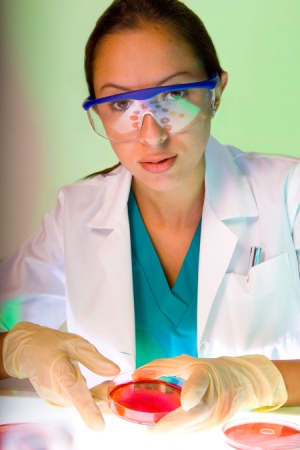
Is Monsanto on the Side of Science?
Monsanto positions itself as a champion of science and GM supporters tar critics as ‘anti-science’.* But is this accurate? Claire Robinson looks at how scientists who investigate the safety of GM foods are treated.
When Australian scientist Judy Carman decided to carry out an animal feeding study with GM crops, she asked three GMO companies to supply seeds. One company didn’t reply; another wanted the details of her study first.
Monsanto sent her a legal document to sign stating that she would give the company the results of the study before publication.
March 26, 2015 | Source: New Internationalist Magazine | by Claire Robinson
Monsanto positions itself as a champion of science and GM supporters tar critics as ‘anti-science’.* But is this accurate? Claire Robinson looks at how scientists who investigate the safety of GM foods are treated.
When Australian scientist Judy Carman decided to carry out an animal feeding study with GM crops, she asked three GMO companies to supply seeds. One company didn’t reply; another wanted the details of her study first.
Monsanto sent her a legal document to sign stating that she would give the company the results of the study before publication. Carman said: ‘We would have been legally bound to do that whether they gave us seeds or not. No sensible scientist would agree to such conditions, and we didn’t.’
Scientists who want to find out if a GM crop is safe to eat or harms the environment need access to seeds of the GM variety as well as the non-GM parent (isogenic) variety it was developed from, grown in the same conditions.
This way, any differences found in an experiment studying the effects of the GM crop and the non-GM control are known to be due to the genetic modification and not to some other factor, such as different growing conditions.
But Monsanto and other GMO companies restrict access to their seeds for independent researchers.1,2 Anyone who buys Monsanto’s patented GM seed has to sign a technology agreement saying they will not use the seeds or crop for research or pass them to anyone else for that purpose.3 Even if permission to carry out research is given, companies typically retain the right to block publication if the results are ‘not flattering’, according to Scientific American.4
In the end, Carman used non-isogenic crops for the control pigs’ diet, noting that GMO companies had claimed, and many government authorities had agreed, that the GM crops used were ‘substantially equivalent’ to non-GM crops. She found toxic effects in the GM-fed pigs – so the GM crops could not be substantially equivalent.5
The French scientist Gilles-Eric Séralini also had difficulty accessing seed for his rat-feeding study with Monsanto’s GM maize NK603.6 No farmer wanted to risk breaching their technology agreement with Monsanto. Eventually a farm school agreed to grow the crops on condition it was not named, out of ‘fear of reprisal’ from Monsanto.7
Food writer Nathanael Johnson has claimed that since 2009 the problem of access to seeds has been ‘largely fixed’, due to research agreements being reached between GMO companies and certain universities.8 But to Carman’s knowledge, these are ‘commercial-in-confidence’ research agreements to make new GMOs, not to test for safety. In any case, we are not permitted to see them to check what conditions are imposed on the researchers.
